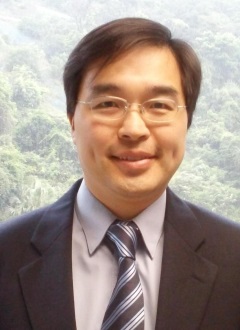时间:2015年6月25日下午3点-5点
地点:玉泉校区教三441会议室
Using Novel Metal Oxides and Multiple Plasmonic Nanostructures for High Performance Organic Optoelectronics
Wallace C.H. Choy
Department of Electrical and Electronic Engineering, The University of Hong Kong, Pokfulam Road, Hong Kong, E-mail: chchoy@eee.hku.hk
Several approaches to enhance the light absorption and carrier extraction of organic optoelectronic devices will be investigated. For the light management, a theoretical and experimental study organic solar cells with multiple metallic nanostructures is presented in this talk. From theoretical study, the physics of the performance enhancement of the organic solar cell is explained by multiphysics model of plasmonic organic solar cells. Meanwhile, we have also experimental investigated the plasmonic-optical and plasmonic-electrical effects with various metallic nanostructures such as metallic nanoparticles and metallic nanogratings into different regions of the solar cells. For the plasmonic-optical effects, we demonstrated the enhancement of light absorption in active layer and thus the improvement of photogenerated current. Regarding the electrical effects due to the incorporation of metal nanostructures, we realize the hot carrier effects and charge storage effects separately and achieve high performance organic optoelectronic devices. [1-4]
Besides enhancing light absorption for carrier generation, carrier extraction is also play critical role in the performance of organic optoelectronic devices. Bearing the compatibility with large-area, low-cost, high-throughput production and all-solution technology, we develop various methods to synthesize low-temperature solution-processed transition metal oxides (TMOs) for hole transport layer [5-7] and electron transport layer [8-10] of organic optoelectronic devices. With low temperature treatment or even at room temperature, the TMO films with small amount oxygen vacancies exhibit high film quality and desirable electrical properties for efficient carrier transport layer. The incorporation of metal nanomaterials can further enhance carrier extraction properties of the carrier transport layers. [11]
Recently, we experimentally and theoretically break the intrinsic space-charge limit (SCL) of organic semiconductors by a novel plasmonic-electrical concept [12]. Our results show that the power conversion efficiency of organic solar cells can be enhanced by over 30% and the value of power conversion efficiency can reach about 9.2% depending on the metallic nanostructures, device structures, and the polymer materials. Details of the improvement will be discussed [1-3].
1) W. C. H. Choy, W. K. Chan, Y. Yuan, Adv. Mat., 26, 5368, 2014.
2) W.C.H. Choy, W.E.I. Sha, X. Li, D.Zhang, Progress In Electromagnetics Research, invited, 146, 25, 2014.
3) W.C.H. Choy, Chem. Comm., invited, 50, 11984, 2014.
4) W.E.I. Sha, H.L. Zhu, L. Chen, W.C. Chew, W.C.H. Choy, Scientific Reports, DOI: 10.1038/srep08525
5) F. Jiang, W.C.H. Choy, X.C. Li, D. Zhang, J. Cheng, "Post-Treatment-Free Solution Processed Non-Stoichiometric NiOx Nanoparticles for Efficient Hole Transport Layers of Organic Optoelectronic Devices", Adv. Mat., in press.
6) X.C. Li, F.X. Xie, S.Q. Zhang, J.H. Hou, W.C.H. Choy, (Nature Publishing Group) Light: Science & Applications, doi: 10.1038/lsa.2015.46; X.C.Li, F.X.Xie, S.Q.Zhang, J.H.Hou, W.C.H. Choy, Adv. Function. Mat., DOI: 10.1002/adfm.201401969.
7) F. Xie, W.C.H. Choy, C. Wang, X. Li, S. Zhang, J. Hou, Adv. Mat., 25, 2051, 2013.
8) H.L. Zhu, W.C.H. Choy, W.E.I. Sha, X. Ren, Adv. Opt. Mat., 2, 1082, 2014.
9) F.X. Xie, S.J. Cherng, S. Lu, Y.H. Chang, W.E.I. Sha, S.P. Feng, C.M. Chen, W.C.H. Choy, ACS Appl. Mat. & Interfaces, 6, 5367, 2014.
10) D. Zhang, W.C.H. Choy, F.X. Xie, X. Li, Org. Electron, 13, 2042, 2012.
11) X.C. Li, W.C.H. Choy, F. Xie, S. Zhang, J. Hou, J. Mater. Chem. A, 1, 6614, 2013.
12) W.E.I. Sha, X. Li, W.C.H. Choy, Scientific Reports, 4, 6236, 2014.
 蔡植豪博士(Dr. Wallace C.H. Choy),香港大学副教授//博士生导师,美国电机及电子学工程师学会(IEEE)高级会员(Senior member)和英国特许工程师, 多年从事半导体光电子器件的理论与实验研究,曾先后在加拿大国家研究中心、美国伊利诺斯大学、美国加州硅谷的日本富士通化合物半导体公司工作,在光开关、光放大器、可调波长的激光, 电光调制器及其光电器件的理论模拟等方面做出了显著成绩。现在是香港大学电子工程系副教授,承担多项研究课题,组建独立实验室和研究组,主要从事有机小分子/聚合物,钙钛矿,和其它半导体薄膜太阳能电池以及发光二极管研究、纳米材料与器件包括材料生长、器件制备及其光电特性等的研究。到目前为止,在光电材料与器件方面发表论文140篇,会议论文140余篇(详情:http://scholar.google.com.hk/citations?user=GEJf9dAAAAAJ),论文被他人引用3610余次 (H-index; 28),国际学术会议邀请报告20余次,2009及 2011年暑假访问Prof. Yang Yang UCLA (加州大学洛杉矶分校), 研究组,2010暑假访问Prof. Karl Leo, IAPP,德累斯顿技术大学, Dresden, Germany, 2013暑假访问Prof./Sir Richard Friend, Cavendish Lab, 剑桥大学。
蔡植豪博士(Dr. Wallace C.H. Choy),香港大学副教授//博士生导师,美国电机及电子学工程师学会(IEEE)高级会员(Senior member)和英国特许工程师, 多年从事半导体光电子器件的理论与实验研究,曾先后在加拿大国家研究中心、美国伊利诺斯大学、美国加州硅谷的日本富士通化合物半导体公司工作,在光开关、光放大器、可调波长的激光, 电光调制器及其光电器件的理论模拟等方面做出了显著成绩。现在是香港大学电子工程系副教授,承担多项研究课题,组建独立实验室和研究组,主要从事有机小分子/聚合物,钙钛矿,和其它半导体薄膜太阳能电池以及发光二极管研究、纳米材料与器件包括材料生长、器件制备及其光电特性等的研究。到目前为止,在光电材料与器件方面发表论文140篇,会议论文140余篇(详情:http://scholar.google.com.hk/citations?user=GEJf9dAAAAAJ),论文被他人引用3610余次 (H-index; 28),国际学术会议邀请报告20余次,2009及 2011年暑假访问Prof. Yang Yang UCLA (加州大学洛杉矶分校), 研究组,2010暑假访问Prof. Karl Leo, IAPP,德累斯顿技术大学, Dresden, Germany, 2013暑假访问Prof./Sir Richard Friend, Cavendish Lab, 剑桥大学。蔡植豪博士根据汤姆森路透的基本科学指标(ESI)2014被认定为前1%引用最多的科�家(Top 1% most cited scientist)。他是Nature Publishing Group-Scientific Reports的�委�成�,OSA Journal of the Optical Society of America B (JOSA B, 美国光学学会OSA杂志创办于1917年)的专题主编辑和IEEE Photonic Journals的副主编。







